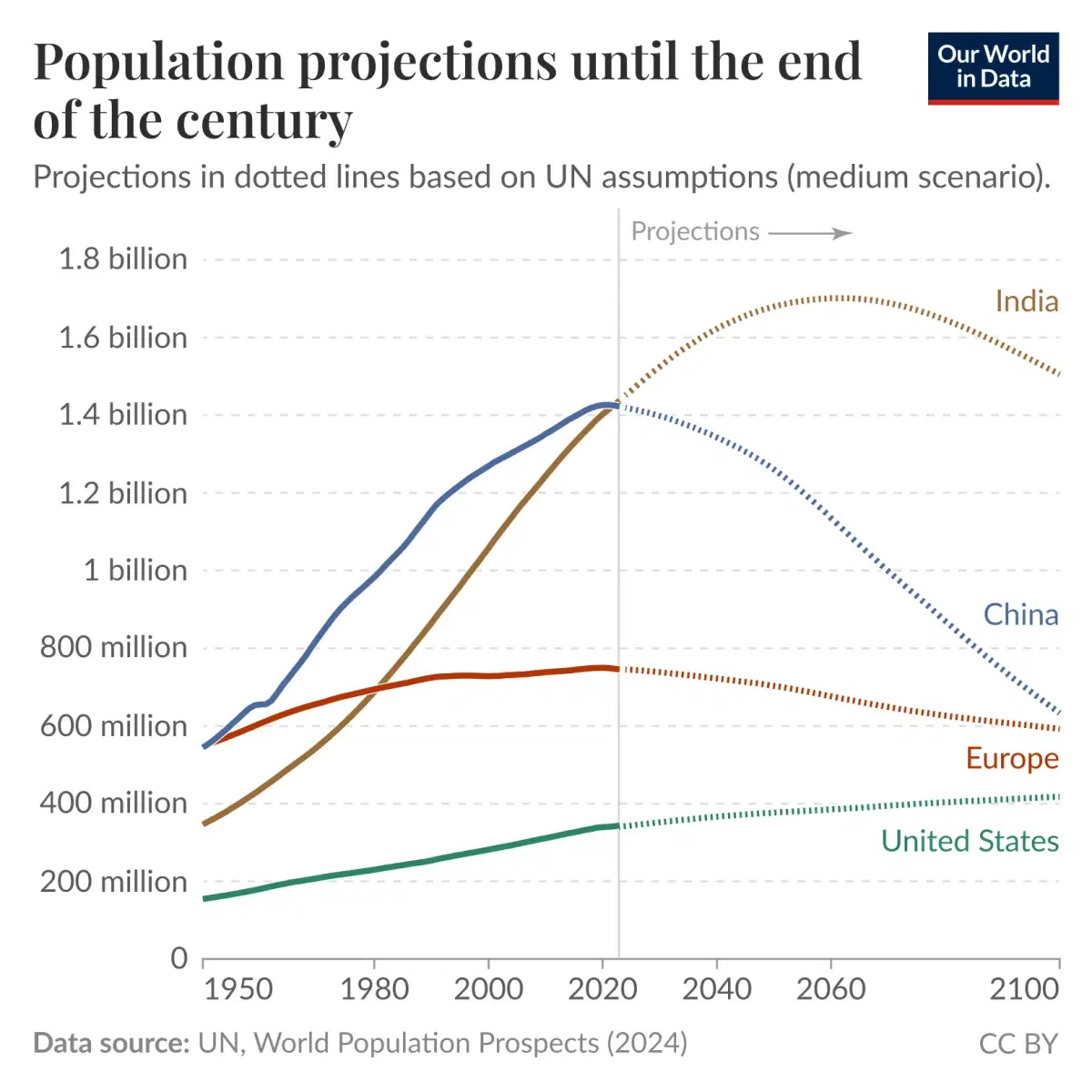![]()
See this visualization first on the Voronoi app.

Charted: Populations of China, India, U.S., and Europe (1950–2100)
This was originally posted on our Voronoi app. Download the app for free on iOS or Android and discover incredible data-driven charts from a variety of trusted sources.
Key Takeaways
- India is projected to remain the world’s most populous country through 2100, stabilizing around 1.5 billion people.
- China’s population is expected to fall by more than half, from 1.4 billion to 0.6 billion.
- Europe’s population will decline steadily, while the U.S. population grows gradually to 420 million.
As global demographics continue to shift, long-term population projections offer a glimpse into how national and regional balances of people—and power—may change.
This chart from Our World in Data uses the UN’s 2024 “medium variant” forecast to show how the populations of India, China, the United States, and Europe could evolve through the end of the 21st century.
Together, these four regions account for roughly half of the current global population, making their demographic futures especially consequential.
Population Trends Diverge Sharply
| Region/Country | Population in 2100 (approx., billions) |
|---|---|
| India | 1.5 |
| China | 0.6 |
| Europe | 0.6 |
| United States | 0.4 |
The chart shows data from the UN’s World Population Prospects, with projections based on fertility rates, life expectancy, and migration patterns. Perhaps the most dramatic contrast is between India and China.
India’s population is projected to grow until around 2060, peaking at roughly 1.7 billion people before declining slightly to 1.5 billion by century’s end. China, by contrast, has already begun to shrink. Its population is expected to fall from a current high of 1.4 billion to just 600 million by 2100—a decline of over 50%.
U.S. and Europe Show More Gradual Shifts
While Asia’s two giants move in opposite directions, the United States and Europe chart more stable demographic paths. U.S. population growth is projected to be slow but steady, rising from just over 330 million today to around 420 million by 2100.
Europe, meanwhile, is expected to experience a gradual population decline. From a peak of approximately 750 million in 2020, Europe is projected to fall to about 590 million by the end of the century—placing it near China’s future population level.
Underlying Assumptions Matter
It’s worth noting that the UN’s projections are based on a “medium” scenario, and different models can yield different results. For example, some demographic forecasts may assume faster fertility declines in sub-Saharan Africa or higher immigration into Western nations. Still, these forecasts are widely used as a baseline for planning and international comparisons.
Learn More on the Voronoi App
For related context on global population dynamics, check out our post on The Countries With the Most Children.